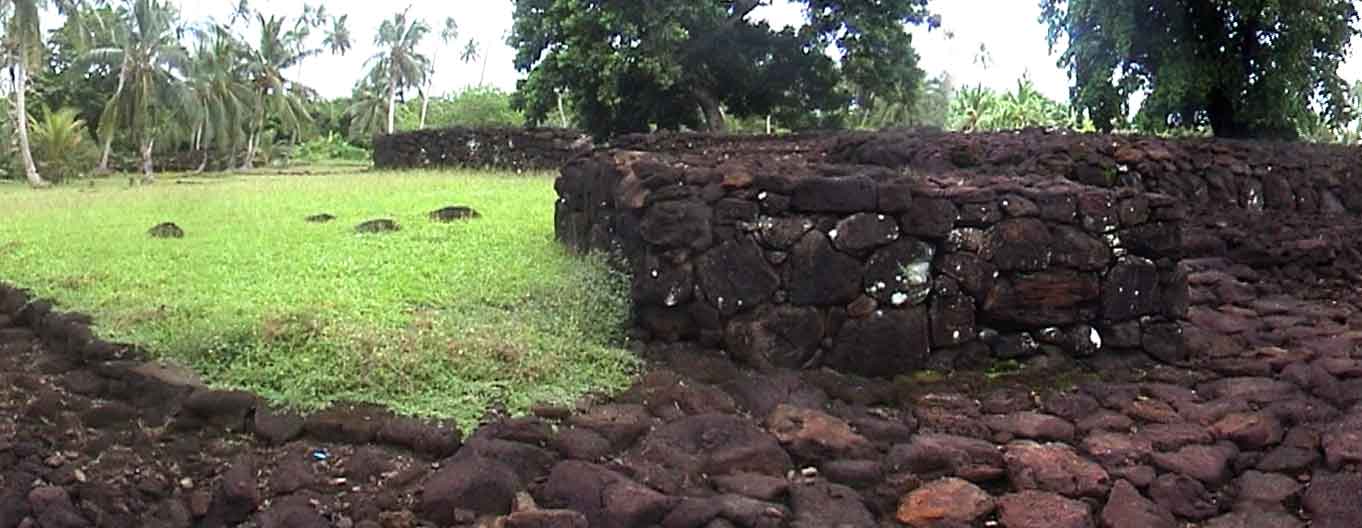The Archaeological Significance of Talietumu Ruins
Talietumu, situated in the Mua District, holds a pivotal place in the historical and cultural landscape of the region. Located approximately 3 km northwest of Mala’efo’ou and about 8 km southwest of Mata-Utu, the capital, Talietumu offers a unique glimpse into the past civilizations that once thrived in this area.
Get your dose of History via Email
The Architectural Layout of Talietumu
Historically known as Kolo Nui, Talietumu was a fortified settlement characterized by its strategic defensive structures. The entire area was encircled by ditches and a substantial ring wall constructed from basalt stone, indicating the community’s emphasis on security and defense.
Within these protective barriers, the settlement housed several preserved buildings, lush green areas, and a central raised platform known as Talietumu. This platform, also referred to as a Marae or Mala’e, signifying “Sacred Place,” was likely the residence of the chief. The circular platform, which narrows towards the top, was once enclosed by a wooden wall. Measuring approximately 90 meters in length, 60 meters in width, and 5 meters in height, this central platform was a significant architectural feature. Basalt stone-built raised footpaths radiated from the marae, connecting various parts of the area, further illustrating the sophisticated planning of the settlement.
Historical Context and Significance
The construction of Talietumu dates back to around 1450 AD, during a period marked by the expansion of the Tongan Empire. This fortified settlement served as the empire’s last stronghold on the island before the defeat of the Tongans and the subsequent establishment of the Uvea Kingdom. This transition marks a significant phase in the region’s history, highlighting the shifts in power and the dynamics of empire-building in the Pacific.
Archaeological Restoration and Preservation
The restoration of Talietumu’s central platform has been a focal point of archaeological interest. French archaeologists Daniel Frimigacci, Jean-Pierre Siorat, and Maurice Hardy, affiliated with the French National Centre for Scientific Research (CNRS), undertook extensive restoration work in the area. Their efforts, which spanned several years, culminated in the completion of the restoration around 1997. Prior to this, Frimigacci had also contributed to the restoration of the nearby Tonga Toto, further emphasizing the importance of preserving these historical sites.
Today, Talietumu stands as a testament to the rich cultural heritage and historical complexity of the region. The site attracts numerous tourists, drawn by its archaeological significance and the insights it offers into the ancient civilizations that once inhabited these islands. The preservation and study of Talietumu not only contribute to our understanding of Pacific history but also underscore the importance of protecting such sites for future generations.

